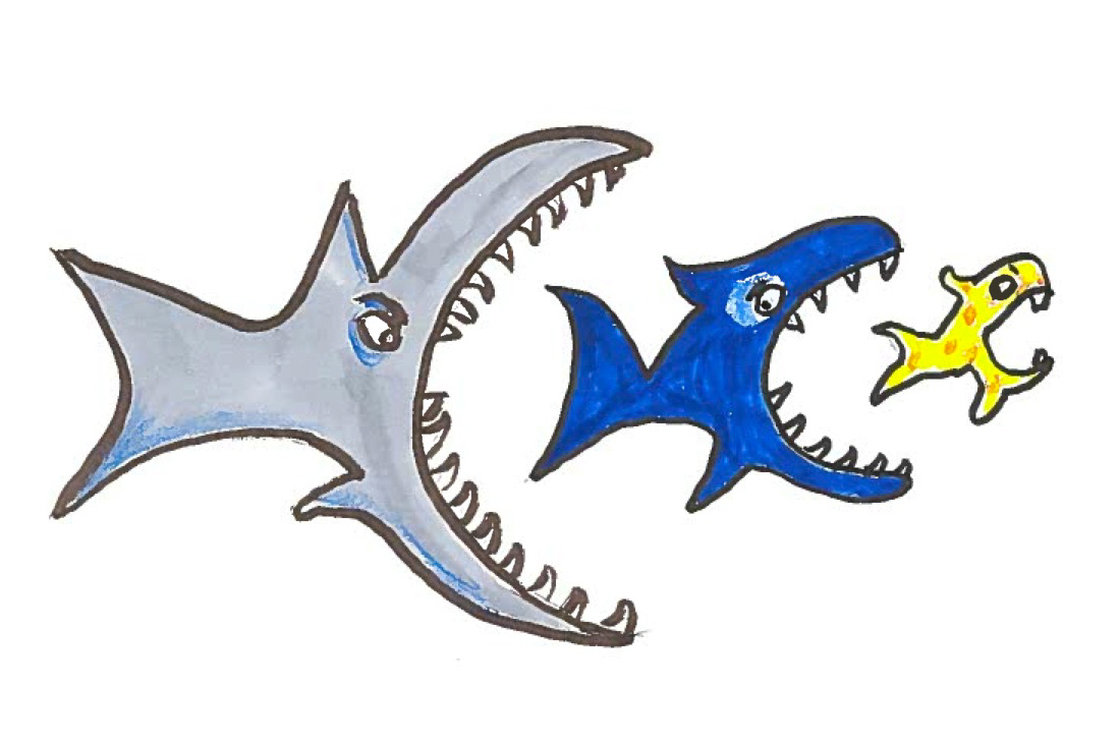An article published in the Proceedings of the Royal Society B in 2010, titled “Iron Defecation by Sperm Whales Stimulates Carbon Export in the Southern Ocean,” is receiving a lot of renewed attention, thanks to a delightfully illustrated summation of it by Robert Krulwich, an NPR science writer, titled “The Power of Poop: A Whale Story.”
According to the abstract of the 2010 article, “The iron-limited Southern Ocean plays an important role in regulating atmospheric CO2 levels. Marine mammal respiration has been proposed to decrease the efficiency of the Southern Ocean biological pump by returning photosynthetically fixed carbon to the atmosphere. Here, we show that by consuming prey at depth and defecating iron-rich liquid faeces into the photic zone, sperm whales (Physeter macrocephalus) instead stimulate new primary production and carbon export to the deep ocean. We estimate that Southern Ocean sperm whales defecate 50 tonnes of iron into the photic zone each year. Molar ratios of Cexport ∶Feadded determined during natural ocean fertilization events are used to estimate the amount of carbon exported to the deep ocean in response to the iron defecated by sperm whales. We find that Southern Ocean sperm whales stimulate the export of 4 × 105 tonnes of carbon per year to the deep ocean and respire only 2 × 105 tonnes of carbon per year. By enhancing new primary production, the populations of 12 000 sperm whales in the Southern Ocean act as a carbon sink, removing 2 × 105 tonnes more carbon from the atmosphere than they add during respiration. The ability of the Southern Ocean to act as a carbon sink may have been diminished by large-scale removal of sperm whales during industrial whaling.”
Krulwich boils “the Whale Poop Hypothesis” down to commenting that “It begins with this obvious observation: Whales poop. In fact, they poop mightily. Smetacek proposed that because baleen whales prowl the seas consuming immense quantities of krill, they might, during digestion, concentrate their food into iron-rich deposits which, when the time comes, they eject back into the ocean. Nobody had looked closely at whale poop, but following Smetacek’s article, marine biologist Stephen Nicol found, to quote him, ‘huge amounts of iron in whale poo.”
He goes on to say, “So who knew? A couple of centuries ago, the southern seas were packed with baleen whales. Blue whales, the biggest creatures on Earth, were a hundred times more plentiful than they are today. Biologists couldn’t understand how whales could feed themselves in such an iron-poor environment. And now we may have an answer: Whales are extraordinary recyclers. What whales consume (which is a lot), they give back. As science writer J.B. MacKinnon writes in his book The Once and Future World, “Whales may have been boosting the productivity of the entire ocean, making their own extraordinary abundance possible.”
Editor’s note: Many thanks to Linda Norrington, a Friend of Geography (and of whales!), for suggesting this fascinating material.





